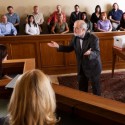
Judges really do get to see it all when it comes to the good, the bad and the just plain ugly of attorneys trying cases. Yesterday, I attended The Recorder Roundtable: “From the Bench – Outstanding Trial Work” in San Francisco, where sitting judges offered great tips for all level of practitioners about what judges do and don’t like to see in trial. The participating judges were the Hon. Teri Jackson of San Francisco Superior Court, Hon. Jo-Lynne Lee and Robert McGuiness of Alameda County Superior Court, and the Hon. Rise Pichon of Santa Clara County Superior Court. I’ve summarized their top five tips below:
1. Motions in Limine: Beware and Use Sparingly
Lawyers love ’em and judges hate ’em. Well, this is a bit of an overstatement, but the judges dislike some practices in this area. They cautioned attorneys that the Motions in Limine are often the first impression any judge has of an attorney, and as with everything, presentation, organization and content matter.
All the judges agreed that one or two key Motions in Limine are much more effective than 30 boilerplate motions that are not even case-oriented. A judge can easily get lost in the forest of your motions and not see the key trees. Attorneys who meet and confer and remove any undisputed motions from judicial consideration make a great impression on the judge, who may well be more lenient as the trial proceeds because counsel are working together.
Judge Jackson also warned not to ask the judge to decide all your factual disputes on Motions in Limine. She pointed out that if you wanted a bench trial, you should have asked to waive the jury.
2. Jury Questionnaires: Keep Them Short and Relevant
Judges like them, but only if they’re well done. If you bring in a 20-page jury questionnaire that asks all about the magazines and TV shows the jurors watch, no jury is going to be happy, and you risk the questionnaire being excluded altogether. The consensus of the judges was to keep the questionnaires to no more than 5 to 6 pages, and stick to the important personal questions that people might be hesitant to answer in open court. Leave out the irrelevant personal questions.
Keep in mind that jurors often believe that a questionnaire is being given by the court rather than by counsel, so judges are very sensitive to annoying the jury. Also remember that it is the attorneys’ responsibilities to get all the copies made and ready for the jury, as the court never has the capacity for that task.
3. Opening Statement: Tell a Compelling Story and Keep It Tight
Judge McGuiness stressed that an opening statement is really your chance to tell a story and not get weighed down in evidence. This is an opportunity to perhaps show or discuss some key evidence, but the focus really should be on presenting the story of the case to make the jury care what the case is about. You’ll have the chance all during trial and in closing to deal with evidence, so structure the opening around a narrative arc—a beginning, middle and end—that tells about people and issues that jurors can relate to.
On the issue of PowerPoints for openings, the judges acknowledged the benefits of this visual aid but had a couple of key tips: do not let the technology overwhelm your connection with the jury and your client’s story, and make sure to clear all evidence with opposing counsel and the court before putting it on the screen. Failure to do so can easily lead to a mistrial.
Judge McGuiness talked extensively about studies showing that jurors listen carefully for only about 4 minutes, and then they rely on visuals and body language more than anything. What’s the lesson here? Keep your presentation tight, visual and to the point.
4. Animations for Re-creations: Don’t Use Them as a Soapbox
The judges all were quite positive about the use of computer-assisted graphics, especially animations—with some caution. I had a chance to talk to Judge Jackson after the event, and she said that when animations turn to argument, they pose a problem. So long as an animation is being used as true demonstrative evidence to highlight an expert’s or witnesses testimony, they are helpful. But when animations cross the line into arguing the case like a closing argument, they’ll never make it in front of the jury.
5. Closing Argument: Go Big with the Verdict (Form)
One of the most common mistakes attorneys make in closing argument has to do with the verdict form. With all the work they put into making sure it’s correct ahead of time, the judges found it positively odd that so many attorneys do not show the verdict form on a screen or blowup diagram to the jury. Attorneys should show an enlarged version of the form and then walk the jurors through each step, telling them how they think the jury should fill it out.
I appreciated the advice from these judges and hope you appreciate this summary of their tips. What tips for trial would you add to this list? Please share in the comment field below.

